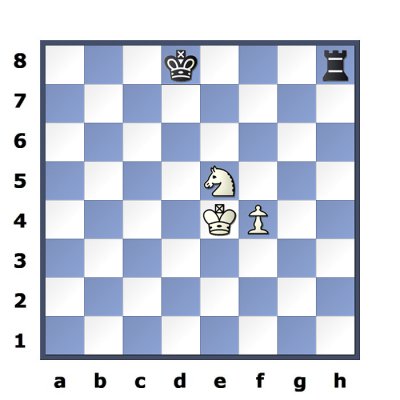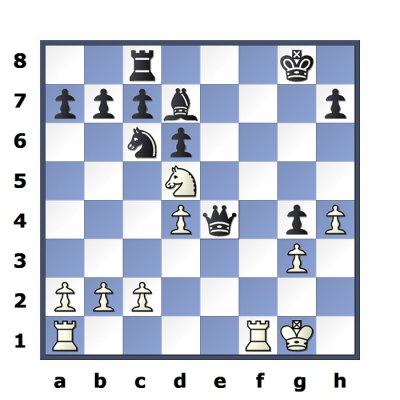Index and Pins --- Skewers --- Double attacks --- Knight forks
Discovered attacks --- Deflection --- Back rank mates
Knight forks: a special type of double attack
Knight forks - or the threats to use them - are so common in chess that they're usually considered to be a separate category from other double attacks. They often come out of the blue, so you've got to be especially alert to the quirky capabilities of the Knight.
The basic idea

This is a situation which every beginner has found himself in, and is an idea with which you can trap many inexperienced players.
The Knight has pounced on the vulnerable square f7, forking the Queen and the Rook. Black will of course save his Queen, leaving the Rook to be captured.
Bringing about a kinght fork
There is no Knight fork available in diagram 1, but White can bring about a position where the Knight can win the game.
By taking the Black Bishop, White forces the King to d8 (diagram 2) and now the Knight can jump in at f7, forking the King and the Rook. White ends up with King, Knight and Pawn against a lone King, which is a winning position.


Bringing about a fork (2)
If only Black's Queen could be on e4, then the Knight could deliver a fork on f6. OK, let's get to it.
White captures the e4 Knight with his Queen, making Black capture back (diagram 2). White can then deliver the Knight fork with Nf6+, and (after capturing the Black Queen) ends up with a material advantage.


Twin combinations from Tigran Petrosian
Two almost identical victories from the 1963-1969 World Champion. In the first one (1956) Petrosian deflects the Black King to the square h8 by playing Qh8+. He then captures the f7 Rook, forking Black's King and Queen.
Same idea in this 1966 victory against Spassky. White plays Qh8+ and again the King is taken to h8, when the Knight can capture the f7 Rook, and then the Black Queen.


Index and Pins --- Skewers --- Double attacks --- Knight forks --- Discovered attacks --- Deflection --- Back rank mates